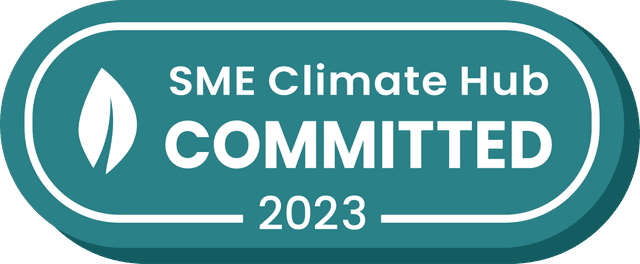)
We often refer to our work here at MAJOR as 'Digital Engineering'.
Recently, when presenting a proposal to one of our new clients, I was asked what we meant by the term Digital Engineering. And whilst I responded, I found myself reflecting on the overarching similarities of the development approaches used in two very different industries I've worked in.
We don’t just build digital products, we engineer them. And if our process works for McClaren, Toyota or Bugatti, just think what it could do for your project
Prior to launching MAJOR in 2007, I worked for over 12 years in the field of Automotive Powertrain Engineering, where I gained extensive experience on a wide range of OEM (Original Equipment Manufacturing) projects which used both conventional- and alternative-fuel powertrain technologies.
At MAJOR, we follow a proven six-stage web development process: learn, define, design, implement, build, and launch. Interestingly, these stages bear a striking resemblance to the ones employed in automotive powertrain engineering, where precision engineering meets advanced technology.
This article delves into the similarities between the two industries, the common themes and approaches used, and highlights the shared principles and practices. Why? because I want to highlight, that at the core, many industries rely on similar foundations – research, planning, design, implementation, and testing. Whether you're building a website or a vehicle engine, the end goal is to create something that works well and satisfies the user.
We don’t just build digital products, we engineer them. And if our process works for McClaren, Toyota or Bugatti, just think what it could do for your project
Learn Stage
In the field of web development, the learning phase is crucial. It involves understanding the needs of our clients, functional requirements, competitive positioning, and specific technology requirements. Similarly, in the initial phase of automotive powertrain engineering, extensive research is conducted into market needs, technology selection and analysis, and regulatory requirements. Both, require a thorough investigation of research and data analysis, forming a solid foundation for the project's direction.
Define Stage
During the Define stage, we move from understanding to planning. In web development, this stage involves setting project goals, defining user journeys, and outlining technical requirements. In the automotive industry, it involves detailing powertrain specifications, performance, NVH & emissions targets, and efficiency metrics. Both fields require meticulous planning and clear goal-setting to guide the subsequent phases.
Design Stage
Design is a crucial aspect of web development and it's not just about aesthetics. It involves creating a good user experience and functional interface. In powertrain engineering, design is focused on detailing powertrain components and systems to achieve specific end-goals. Both require innovative thinking and technical expertise to blend form and function and ensure that the end product is user-friendly, efficient, feasible to manufacture/build cost-effectively, and meets project and regulatory standards.
Implement and Build Stages
The implementation stage in web development is where coding and development occur, while building refers to integrating these elements into a cohesive end-product. Similarly, in automotive powertrain engineering, implementation involves the actual engineering of components, followed by the manufacture and assembly of these parts into a working powertrain system. These stages are where ideas are transformed into tangible, functioning realities, demanding precision and attention to detail.
Launch Stage
When launching a website or a new powertrain system, many steps are involved beyond simply releasing the product. This includes thorough testing, introducing the product to the market, and gathering user feedback. Both industries emphasise the significance of a well-planned launch, as it ensures the product meets and exceeds user expectations and industry standards.
Testing, Testing, Testing - at every stage
In my early years as a diesel combustion system specialist, I was sent to brave the -48°C cold of Fairbanks, Alaska.
It was there that I learned a valuable lesson about the importance of real-world testing. I was conducting 'cold start' testing on a new diesel powertrain system – a true baptism of fire, or should I say ice, that highlighted the stark difference between lab simulations and field conditions.
This experience underscored a principle that's central both in digital product development and automotive powertrain engineering: the indispensability of testing at every stage.
At MAJOR, testing isn't just a box-ticking exercise. It's a comprehensive process, where functionality, usability, and performance are scrutinised. We're not just checking if features work correctly; we're ensuring the products we build are user-friendly and perform as expected on various devices and browsers. This is where we catch those pesky broken links, the snail-paced load times, and other edge cases. It's all in pursuit of that flawless user experience.
Similarly, testing in automotive powertrain engineering is about more than just ticking off requirements. It's a rigorous validation of component and system integrity, reliability, and performance. It's not just about meeting benchmarks; it's also about ensuring safety and compliance with industry standards. These tests are intense and varied, mirroring the diverse conditions the powertrain will face in its lifetime.
In both of these worlds – my aim has been to converge on a common goal: enhancing the end-user experience. For websites, it means creating an intuitive, engaging online environment. In the automotive world, it translates to a driving experience that's reliable, efficient, safe, and enjoyable. So, whether it's navigating a website or the roads, the principle remains the same: testing, testing, and more testing. It’s what makes or breaks the experience.
Lessons and Similarities
Exploring these stages shows some striking similarities between web development and automotive powertrain engineering. Both processes thrive on a structured approach, blending creativity with technical expertise and requiring thorough research, meticulous planning, and user-centric design.
Diversity is a catalyst that drives innovation.
I’m privileged to be part of a very diverse team here at MAJOR. The beauty of diverse teams lies in their ability to challenge assumptions, push boundaries, and leapfrog over the standard to the extraordinary. It's not just about combining different skills; it's about melding different ways of thinking, seeing, and experiencing the world.
So think about this when you are next hiring. When you bring together minds that view the world through different lenses, you're not just engineering a product; you're engineering breakthroughs. It’s a testament to the fact that the most successful products, whether they be cutting-edge websites or revolutionary automotive powertrains, are born from teams that embody a rich diversity of thought and experience.
&w=64&q=10)
)
&w=64&q=10)



